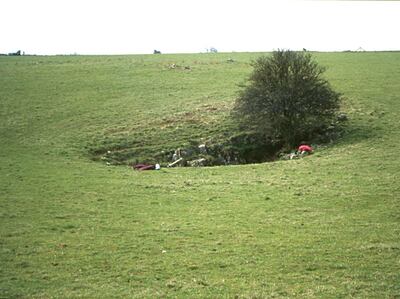Researchers have uncovered the oldest known instances of plague in Britain, dating back 4,000 years, according to a report published in Nature Communications.
Scientists detected the presence of Yersinia pestis, the bacteria that causes plague, in three separate cases in human remains found in a mass grave in Charterhouse Warren, Somerset, and at a ring cairn monument in Levens, Cumbria.
The researchers at the Francis Crick Institute – in collaboration with the University of Oxford, the Levens Local History Group and the Wells and Mendip Museum – used small skeletal samples from a total of 34 people found at the two sites.
Screening for Yersinia pestis in teeth, a procedure performed in a specialist clean room facility, involved drilling to extract dental pulp capable of trapping DNA remnants of infectious diseases.
Following the analysis of the extracted DNA, three instances of Yersinia pestis were confirmed in two children aged between 10 and 12, and a woman aged between 35 and 45.
Radiocarbon dating showed that these people probably lived at about the same time.

The Late Neolithic and Bronze Age lineage of plague has previously been identified in remains found in Eurasia from between 2,500 to 5,000 years ago.
However, it had not been observed in remains found in Britain from that time, and the strain's broad geographic range suggests easy transmission.
Genome sequencing carried out by the researchers indicated that the lineage was introduced to Central and Western Europe about 4,800 years ago, possibly by humans migrating into Eurasia. The research now proposes that it also extended to Britain.
The remains tested did not possess the yapC and ymt genes found in later strains of the plague, the latter of which is crucial for plague transmission via fleas.
It is believed that this strain was not transmitted through flea bites, unlike later strains such as the Black Death.

The discovery may also be the tip of the iceberg, as pathogenic DNA tends to degrade rapidly in samples that might be incomplete or eroded, making it plausible that other people found at these burial sites could have been infected with the same strain of plague.
The Charterhouse Warren site stands out, as it does not match other burial sites of the time period due to the apparent traumatic deaths of the people buried there.
Researchers speculate that these people might have been infected with the plague at the time of their demise, even though a plague outbreak does not appear to have caused the mass burial.
Pooja Swali, the first author of the paper and a doctoral student at the Crick, expressed her awe at the capacity to detect ancient pathogens in degraded samples thousands of years old, describing it as “incredible”.
Ms Swali emphasised the vital role these genomes play in shedding light on the spread and evolutionary changes of pathogens in the past.
Pontus Skoglund, group leader of the Ancient Genomics Laboratory at the Crick, highlighted the new research as an essential part of understanding the ancient genomic record of pathogens and humans, and how they have co-evolved.
Dr Skoglund emphasised the value of ancient DNA in documenting infectious disease much further into the past, while suggesting that future research could help us understand how our genomes responded to such diseases in the past and continue to do so.







